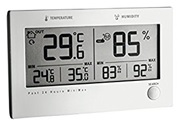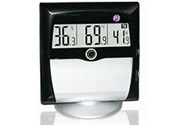British Gymnastics Insurance Centre Website.
 |
British Gymnastics regards the health, safety and welfare of all members to be of paramount importance, which should not be compromised. To this end, it is British Gymnastics policy to ensure so far as is reasonably practicable, that procedures are in place to maintain a safe and healthy environment not only for our members but also for other persons who may be affected by the activities of British Gymnastics and/or our affiliated clubs and organisations.
British Gymnastics Health and Safety Policy
The British Gymnastics Health & Safety Management System and guidance documents have been designed to support British Gymnastics affiliated clubs and organisations to comply with the British Gymnastics policy and any relevant legal requirements.
Health & Safety guidance - safe coaching
Health & Safety guidance - safe participation
Health & Safety guidance - safe trips
The Management System is available for registered clubs to download on GymNet.
British Gymnastics health & safety FAQs
One of the benefits of being registered with British Gymnastics is free expert health and safety advice from Agility.
If you ever need the answer to these FAQ's or similar queries...
• What are my Health & Safety responsibilities?
• Are there forms and templates to help me?
• How do I undertake a Risk Assessment?
• What checks do I need to do and how often?
• When is an accident reportable?
• Who do I report accidents to?
…Then this is where Agility can help you.
Click here to read more information on Agility and how they can help you.
Tel: 01527 571 612
Email: bg.hs.advice@agilityrac.com
Website: www.agilityrac.com
 |
Incidents and Reporting
- I’ve received a solicitor’s letter, what do I do?
If you have received a letter of claim from a solicitor this must be acknowledged to them within 24 hours. Please complete the form on the insurance centre by following the link below to send an acknowledgement to the solicitors and contact the W Denis Insurance Brokers claims team immediately.
British Gymnastics Insurance Centre Website. - What accidents need to be reported to British Gymnastics?
Following the introduction of the British Gymnastics Health and Safety Management System, we have noticed a marked increase in the number of accidents being reported to British Gymnastics.
Although we require clubs to report all accidents where first aid have been provided, we can provide the following clarification:
• Minor or repetitive injuries that arise out of doing gymnastics are not accidents and unless they result in a hospital visit, they do not need to be report to British Gymnastics even if first aid is administered e.g. strained muscles where ice is administered.
• Although clubs should keep a record* when a plaster is administered, it id not necessary to report such minor injuries to British Gymnastics unless there is a reasonable belief that the circumstances of the injury could give rise to a claim
*Clubs need to maintain a record e.g. in an accident book. These records must be kept for a minimum of three years (or three years after the injured person reaches 18 if they are a child). - How do I report an accident to British Gymnastics?
To report an incident, anyone with club secretary access to the club will be required to log in to GymNet and go to the club management tab. There is an incident report tab in here with all the details that are required to be completed.
When submitting the report, please ensure that the coach present is linked through their own GymNet as ‘Coach’ otherwise our system will not allow them to be added to the report.
Helpful Hints
• The time of incident is not a 24hr clock but does require two digits. For example, 08.30pm.
• In the free text boxes, please try to use letter and number characters and not symbols.
• If the equipment involved in the incident is not in the listed in the ‘Equipment being used’, please choose the closest fit and then add into the additional text box field.
• Once an incident report has been submitted, it cannot be changed. If you have missed any information off, please just email in to customersupport@british-gymnastics.org. - Do we need to report an injury sustained by a gymnast under RIDDOR?
The majority of injuries to gymnasts would ordinarily not be reportable under RIDDOR. It is accepted that during the participation of organised sport, there is a risk that sporting injuries may occur that are not connected with how clubs manage the risks from the related activities.
The acid test for when accidents and/or injuries become reportable is whether the accident was caused by the condition, design, or maintenance of the premises or equipment, or because of inadequate arrangements for supervision of an activity.
Examples of RIDDOR Reportable and non-reportable accidents:
Reportable
• The condition of the premises or sports equipment was a factor in the incident, e.g. A gymnast falls, and fractures an arm because a member of staff has assembled the equipment incorrectly;
or
• A coach asks a class of gymnasts to use a piece of equipment which has not been previously inspected. The piece of equipment falls and hurts a number of the gymnasts resulting in a number of injuries
Non-Reportable
• A gymnast breaks an ankle after landing awkwardly from a pommel horse performing a routine they have conducted many times before. Supervision was in place and all equipment set up correctly with maintenance records and checks in place. Unfortunately, a sporting injury.
For the avoidance of doubt, it is recommended that if any club is unsure whether an injury should be reported they should contact our Health and Safety advice service, Agility tel: 01527 571612 or email: bg.hs.advice@agilityrac.com for further assistance. Further information and forms can be found in the Health and Safety Management System in GymNet. Additional information on RIDDOR is available on the HSE website at http://www.hse.gov.uk/riddor - How should I approach an incident investigation?
A six-step, structured approach to incident investigation helps to ensure that all the causes are uncovered and appropriate remedial action taken.
Step 1 - Immediate action
In the event of a serious incident, immediate action may include:
• Making the area safe
• Preserving the scene
• Notifying relevant parties e.g. HSE, Agility, British Gymnastics
• Collecting perishable evidence, e.g. CCTV tapes, samples.
Step 2 - Plan the investigation
Planning ensures that the investigation is systematic and complete. Consider:
• What resources are required?
• Who will be involved?
• How long will the investigation take?
For severe or complex incidents, an investigation team will be more effective than a single investigator.
Step 3 - Data collection
Information about the incident is available from numerous sources, not only people involved or witnesses to the event, but also from equipment, documents and the scene of the incident.
Step 4 - Data analysis
Typically, an incident is not just a single event, but a chain of events. The sequence of events needs to be understood before identifying the root and underlying causes for the accident as well as the direct, more obvious causes. Although the action or errors of one person may be the direct cause, the root/underlying causes are usually traced back to the environment and management approach in respect of people, resources and finance and health and safety.
Step 5 - Corrective actions
It is important that the remedial actions deal with both the direct causes (often a quicker fix) and the root and underlying causes. It is important not to miss an opportunity to reduce the risk of recurrence of this or a similar type of incident with a common root cause.
Step 6 - Reporting
The investigation is concluded when all actions have been completed and the findings have been communicated to relevant people so that lessons can be shared. This can be achieved by providing information at relevant meetings and developing scenarios to use in presentations and training for club staff and volunteers. If you have learned something that might be relevant to a wider gymnastics audience, please also share this with the health and safety team at British Gymnastics by emailing: healthandsafety@british-gymnastics.org.
Risk Assessment
- Why do I need to carry out a risk assessment?
A risk assessment is a careful examination of anything in your club.
It is a legal requirement to complete risk assessments under the Management of Health and Safety at Work Regulations 1999.
If you do have five or more employees, you must document your risk assessments.
You must carry out a risk assessment to identify the hazards in your workplace. It is important to look at what steps you can take to reduce the level of risk to a ‘reasonably practicable level’.
Temperatures in the Gym
- When should we stop or restrict gymnastics activities due to high temperatures for safety reasons?
Health and Safety legislation does not enforce a specific maximum temperature although the Workplace (Health, Safety and Welfare) Regulations 1992 says that your employer must maintain a reasonable temperature where you work. There is a minimum temperature of 16°C (or 13°C if the work involves considerable physical activity).
It is important to adopt a risk-based approach when deciding whether training should be stopped or modified during periods of hot weather. When deciding if it’s safe to continue, you need to reduce the likelihood of a heat-related injury like heat stroke, exhaustion and heat syncope (fainting).
A dynamic risk assessment would be best suited in this instance because of the variations in temperature and humidity. Coaches are best placed to do this as they have the appropriate experience, and knowledge to assess the activity.
Consider the following when making the assessment:
• Can the athlete complete the task without physically overexerting themselves due to the heat and humidity?
• Can the activity be modified so it is a less strenuous one?
• Is there an ample amount of water available?
• Can the session be postponed or rearranged to avoid the hottest part of the day (11:30 – 13:30)?
• Can coaches recognize the symptoms in someone with the early stages of a heat illness?
• Is there someone present who will know how to provide first aid to someone with a heat illness?
• Are there sufficient staff to assist if required?
If considering the above, you have decided the event/task is safe to go ahead, so you should consider using the below heat index table to help you decide what control measures need to be in place for the event/task to run safely. The heat index is the temperature that a person feels on the skin. You will need a THERMO-HYGROMETER, which displays the current temperature and relative humidity to measure this.
It is important that the heat index is checked throughout the day to ensure that the correct Recommended Minimum Actions are in place.

If we take the temperature from THERMO-HYGROMETER and cross reference on the table the heat index is 29°C
Recommended Minimum Actions
Caution Zone 1
If we take the temperature from THERMO-HYGROMETER and cross reference on the table the heat index is 36°C
Recommended Minimum Actions
Extreme Caution Zone 2Recommended Minimum Actions Caution: Zone 1 Heat Index
Under 32°C• Provide ample amounts of water. This means water should always be available and athletes should take in as much water as they desire
• Optional water breaks every 30 minutes for 10 minutes duration
• Ice-down towels for cooling
• Watch/monitor athletes carefully for necessary actionExtreme: Caution Zone 2 Heat Index 32°C to 41°C
All sports• Provide ample amounts of water. This means water should always be available and athletes should take in as much water as they desire
• Mandatory water breaks every 30 minutes for 10 minutes duration
• Ice-down towels for cooling
• Watch/monitor athletes carefully for necessary action
• Reduce time of outside activity
• Consider postponing practice to later in the day
• Re-check temperature and humidity every 30 minutes to monitor for increased Heat IndexDanger: Zone 3 Heat Index 41°C to 54°C
All sports• Provide ample amounts of water. This means water should always be available and athletes should take in as much water as they desire
• Mandatory water breaks every 30 minutes for 10 minutes duration
• Ice-down towels for cooling
• Watch/monitor athletes carefully for necessary action
• Alter uniform by removing items if possible
• Reduce time of outside activity as well as indoor activity if air conditioning unavailable
• Postpone practice to later in day if possible
• If necessary for safety, suspend activity
• Re-check temperature and humidity every 30 minutes to monitor for increased Heat IndexExtreme Danger: Zone 4 Heat Index
above 54°C• Stop all outside activity in practice and/or play and stop all inside activity if air conditioning is unavailable - What is the minimum temperature for the gym?
There is a minimum temperature of 16°C (or 13°C if the work involves considerable physical activity).
However, during periods of hot and cold weather, you must adopt a risk-based approach when deciding whether training should be stopped or modified.
Please note: When completing a risk assessment, it is best you complete it with the use of a digital thermometer e.g. a Thermo-Hygrometer which displays the current temperature.
Fire Safety
- Who should be responsible for fire safety at my club?
As a business owner you have certain legal responsibilities. This includes conducting regular fire risk assessments, having an up-to-date emergency plan and fire alarm testing. Current legislation requires someone in the business to take on the role of the ‘responsible person’. As an employer, this is usually you.
It is important to check your hire agreement and lease to see who is responsible. If you are in doubt, please contact agility who can help you find the solution.
Equipment
- How often should I complete equipment checks?
As an employer you are legally required to ensure a good healthy and safe standard is maintained in your equipment. A visual pre-start check should be completed every morning by an experienced coach to ensure there is no damages or issues with the equipment.
On a weekly basis you should complete a documented visual check on all of your gymnastics equipment, including those that are fixed and adjustable. This should be completed by your coaches and should highlight any defects or issues with the equipment. If a defect is identified it should be determined immediately what course of action is required.
Paperwork and Responsibilities - What piercings can be worn whilst doing gymnastics?
British Gymnastics believes that jewellery and adornments worn in body piercing are inappropriate for safe practice in gymnastics and trampolining
You can read the safe coaching guidance for further information.
- Do we have the right health and safety paperwork?
Health and Safety can seem like a bureaucratic nightmare at times. However, it is important to understand that all the paperwork required has a purpose and is often a legal requirement.
There are many different types of gymnastics clubs with a variety of management structures, using facilities that are hired, occupied under a lease agreement or in some cases privately owned. The extent of a club’s statutory duty depends on the level of control it has over its premises and the type of facilities provided.
All clubs and organisations must have a health and safety welfare policy and agreed procedures covering the risks associated with the club/organisation’s activities. If your club/organisation has its own building, the company will also be responsible for the health and safety of the premises. If the club hires or leases the facility from another (e.g. Local Authorities, Leisure Centres) the club should confirm that they have procedures and assessments related to the premises.
The typical health and safety documents that would be required by a Gymnastics Club, include.
• Health, Safety and Welfare Policies
• Liability Insurance (provided through BG registration)
• Fire Risk Assessment
• First Aid Needs Assessment
• Asbestos Management Plan (If your club owns its premises and it was built before 2000)
• Accident Investigation Book
• Risk Assessments (Premises, Young Persons, New and Expectant Mothers, Chemical)
• Health and Safety Inspection Forms (Premises, Equipment)
This documentation is not only important in ensuring effective health and safety management at your club, but could become invaluable in defending claims or satisfying local authority inspections. The Health and Safety Management System, that includes templates for many of the above documents, and details of our health and safety helpline (Agility), is available on GymNet. - What health and safety responsibilities do we have for volunteers?
Many gymnastics clubs rely on volunteers to support a range of club activities including coaching and helping to set up and put away equipment. Although the legal health and safety obligations that clubs have towards their volunteers are not as straightforward as they are for their employees; clubs still have a duty to safeguard their volunteers. It is good practice, where relevant, to adopt similar rules and procedures for both employees and volunteers.
New volunteers should also receive a health and safety induction. Depending on how much or how little the volunteer may be helping, it may not be necessary to go through the full induction you would provide new staff members, but rather focus on the specific tasks the volunteer will be undertaking and the hazards and controls associated with these tasks and where their responsibilities lie. The actions you have taken need to be documented in your risk assessment.
Volunteers should be made to feel appreciated but reminded how important it is to follow the club’s health and safety policies and procedures. Clubs should document what tasks volunteers are undertaking, what instructions they have been given and what supervision is in place. Where possible, ask volunteers to sign to confirm they have received and understood the information provided.
Failure to supply volunteers with relevant health and safety information and keep a record of your actions could be problematic for a club if a volunteer was involved in an accident. For example, if a young person volunteering for your club was left unsupervised to set up equipment and in doing so, failed to secure it correctly and he or she sustained an injury in the process or another person who uses the equipment is injured, the club could be held liable by a court for failing to provide appropriate instruction, supervision and training to the young volunteer on the safe use of the equipment.